Looking for more opportunities to attract and engage with buyers? Grab their attention with online marketing content. Today’s B2B buyers seek out consumable content that not only helps them make informed purchasing decisions, it provides insight into your company, your product and service offerings, and even your corporate citizenship.
Digital engagement is intrinsic for many in the wholesale distribution marketplace. If you can provide relevant, visually appealing, and easy to digest content they can access on their mobile device, you will make great inroads in attracting targeted buyers and gaining more customers. Research by Content Marketing Institute (CMI) supports this assertion. In their B2B Content Marketing 2018 US Benchmarks, Budgets, and Trends Report, 77% of B2B marketers surveyed said content marketing increases engagement, 72% said it increases leads, and 51% said it increases sales.
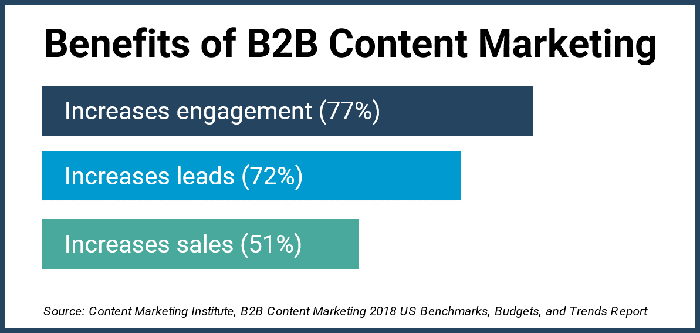
In CMI’s 2020 follow-up report, respondents said content creation would be their top content marketing investment for 2021. That’s because content, especially organic/non-paid content, is highly effective. A good content strategy involves building a diverse collection of digital content and sharing it across multiple channels. Start with these five types of marketing content that resonate with B2B buyers:
- Social media posts
- Blog posts, white papers, and case studies
- Emails
- Video
- Webinars and online training
Together, these different offerings provide something for every type of buyer, whether they prefer reading comprehensive white papers, scanning online posts, watching a short video, or viewing a tutorial. Read on as we explore these five content types, and share examples from some of our eCommerce customers.
Social media posts
Your customers are all on social media, and so should you. Nearly 90% of B2B marketers in CMI’s 2020 survey consider social media platforms their preferred organic distribution channel. Social network use continues to grow, and Statista predicts that by 2023 there will be nearly 260 million social media users in the U.S. B2B marketers get the most engagement on LinkedIn, Facebook, Twitter, and YouTube. Together, these four platforms allow businesses to build their brand while interacting with a wide audience.
LinkedIn alone has over 160 million U.S. subscribers and is a preferred social media channel for connecting with colleagues, reading industry news, and seeking recommendations. In a study of its own platform, LinkedIn found that images increase user comment rates by 98%.
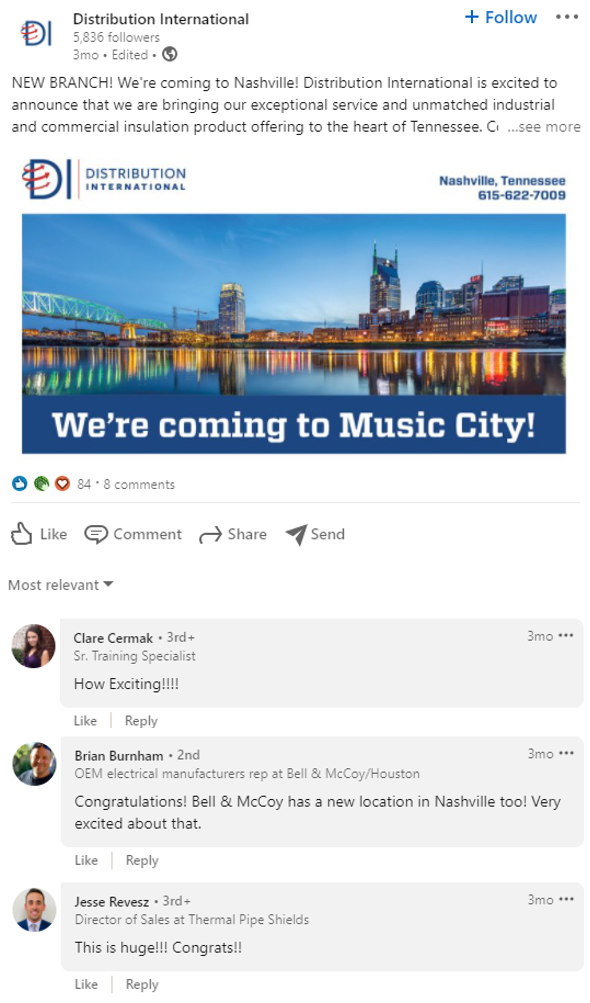
Distribution International has more than 5,800 followers on LinkedIn and their posts frequently generate conversations
Facebook has been the platform of choice for personal use for over 15 years. Perhaps, because of everyone’s familiarity and comfort level with the platform, it has developed into a popular place for businesses and B2B buyers to engage as well. Facebook says business decision makers spend more time on their platform than other users (a median of 74% higher) and 60% of that time is via a mobile device.
Distributors are also utilizing Twitter to build awareness and generate leads. Through the use of shorter messaging, links, and hashtags, companies are able to share content and engage with their audience. Hashtags are keywords used as a search tool to find conversations and tweets around a topic. When a person clicks on or searches a specific hashtag, they will be able to find all the profiles and public posts that use that hashtag.
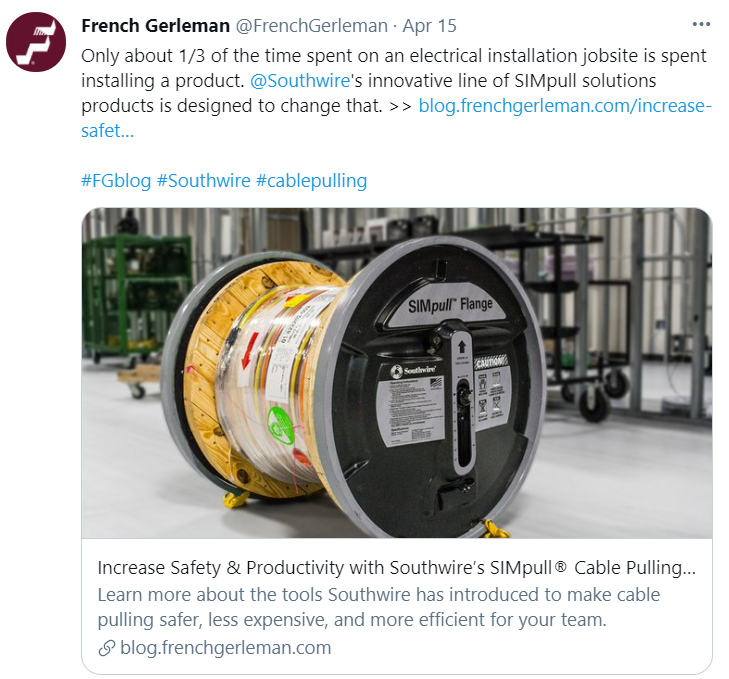
French Gerleman promotes engagement on Twitter with hashtags and links
Social media is an efficient and cost-effective way to distribute organic content. If you want to build a strong social media strategy, read our white paper, How B2B Companies Can Leverage Social Media Marketing, which lays out a seven-step plan to become a social media success.
Blog posts, white papers, and case studies
Original content that is well-written and relevant is a real traffic driver. Search engines like Google seek out quality content that relates most to a person’s search, but they are also looking for content that is reader-friendly, includes the right amount of keywords, and contains pertinent links and images.
In Demand Gen Report’s 2020 Content Preferences Study, they found B2B buyers place more emphasis on the trustworthiness of the content they are downloading to make purchase decisions. If they deem you a reliable source that offers perspective and provides solutions to their challenges, they will be more inclined to share your content and engage with your business.
To build that trust, share your company’s technical knowledge and product expertise in the form of blog posts and white papers. Enlist your organization’s leaders, salespeople, and product managers to create the content, and have your marketing staff review it to ensure it is professionally written and a worthwhile read.
Blog posts are typically shorter in length and can include opinion and perspectives, while white papers are more comprehensive and backed with research and data. Consider making your white papers gated on your website so that visitors have to fill out a short lead capture form to download the content.

Arbill regularly posts helpful tips in their Safety Blog and backs them up with industry statistics and facts
While 43% of respondents in Demand Gen’s report said they prefer shorter content formats like blog posts, they considered reports (39%) and white papers (35%) to be the most valuable types of content for researching products.
Case studies also help to build credibility and strengthen your reputation by showcasing specific projects in which you solved a customer’s business challenges. Ask a satisfied customer if they would like to be featured in the piece and include quotes from them to further substantiate their success story.
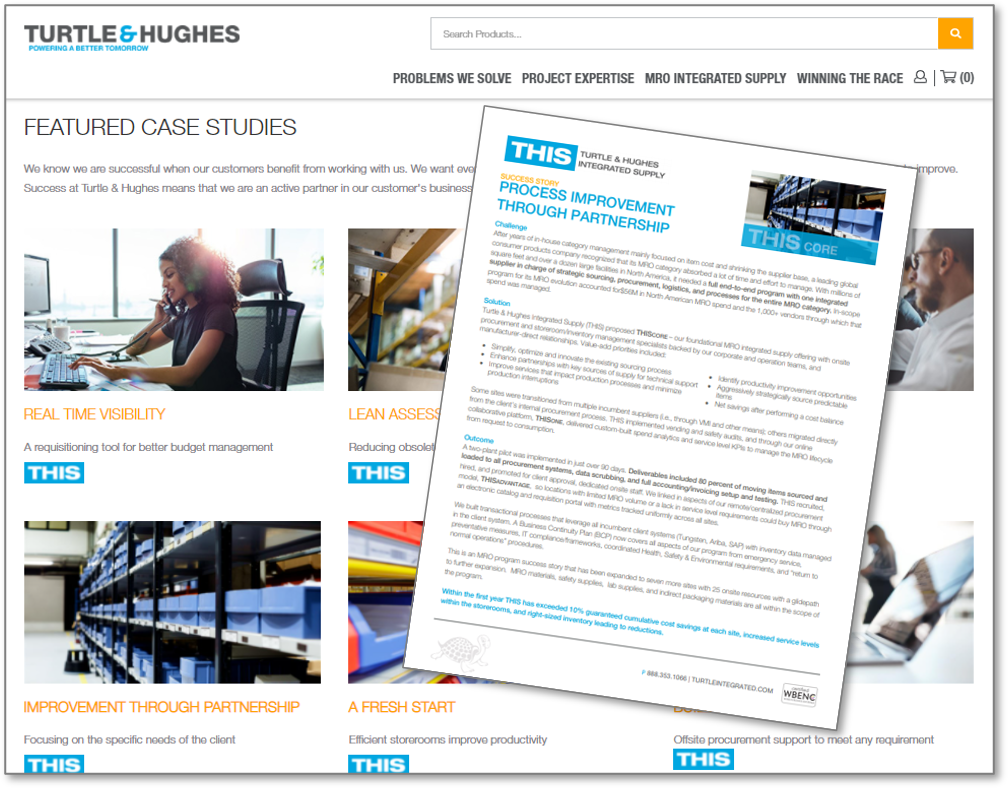
Turtle & Hughes has a dedicated page of success stories that site visitors can download
Content development takes time and commitment, so start with shorter-format blog content and build up to longer white papers and case studies. For tips on how to start a blog on your website, check out our post called Blogging 101: How to Master the Basics of Blogging
Emails
According to CMI’s 2020 study, over the last year email has been one of the top three organic content distribution channels for B2B marketers to promote events, distribute monthly newsletters, and nurture leads. When done right, email marketing can bring great returns.
Email marketing company Litmus found that for every $1 you spend on email marketing, you can expect an average return of $42. To maintain engagement, keep emails relevant and timely, and always include links and calls to action.
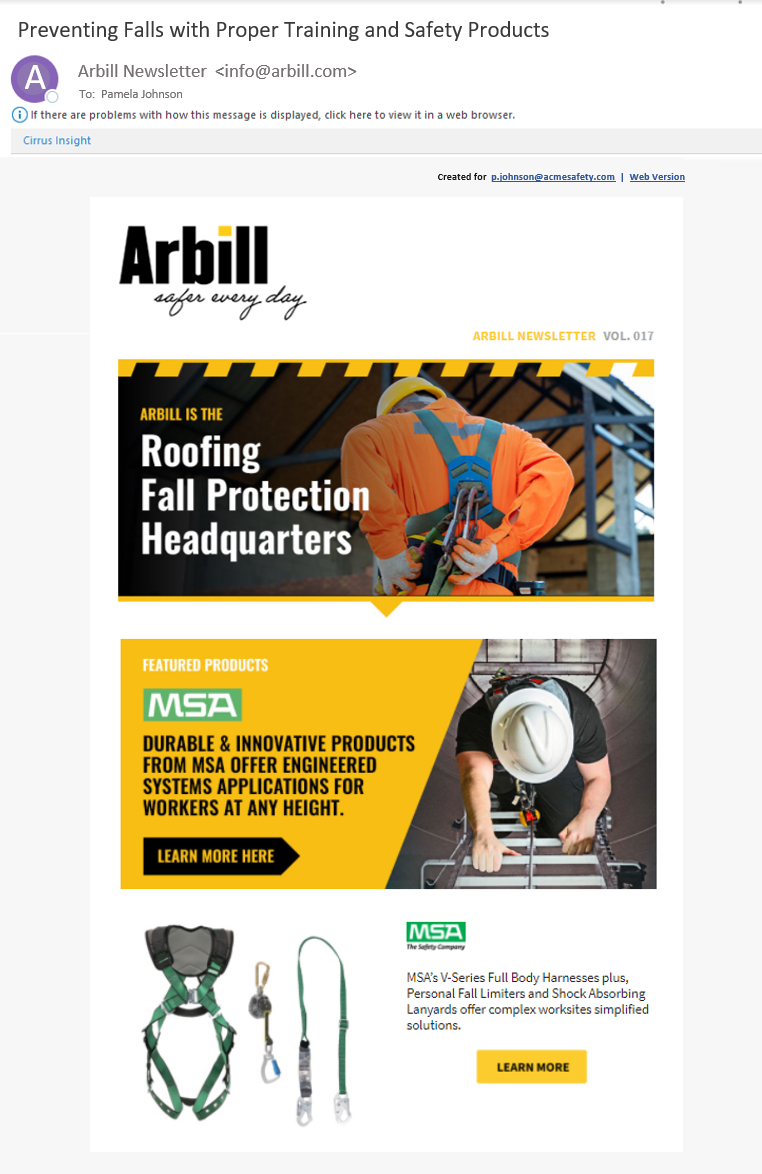
Arbill’s monthly newsletter promotes specific topics and products and includes links to learn more
Learn how to send the right email communications and content at different stages of the customer lifecycle in our blog post titled Adopt a Lifecycle Marketing Strategy to Attract and Retain Customers.
Video
Video content is growing in popularity with B2B buyers because it’s a convenient format they can watch on their mobile device over lunch, on the job site, or at home. In fact, for the first time in the history of Demand Gen’s Content Preferences Survey, video ranked as the top content type for B2B buyer consumption.
Videos allow companies to deliver a message in a way that is more engaging and easier for buyers to absorb. Enlist the help of employees to produce short-format videos that demonstrate product applications, provide tutorials, share product reviews, and showcase your company, employees, events, and customers. House the content on your website as well as video channels like YouTube, and promote them on social media and in email communications.
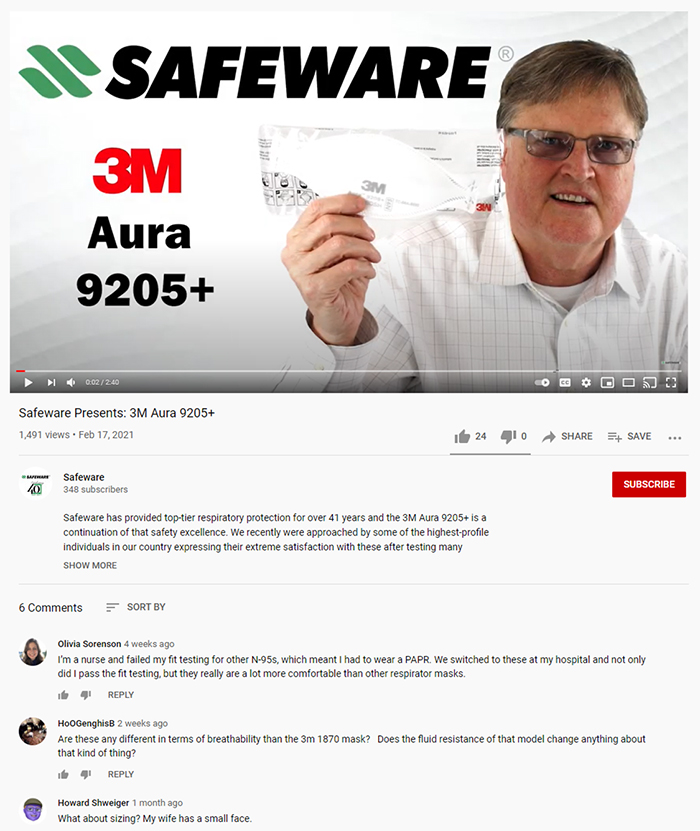
Video product reviews, like the one Safeware did of 3M respiratory masks, provide helpful information and
promote engagement
When appropriate, infuse personality and humor into some of your videos to keep the viewers’ attention and show your business has a “human” side.
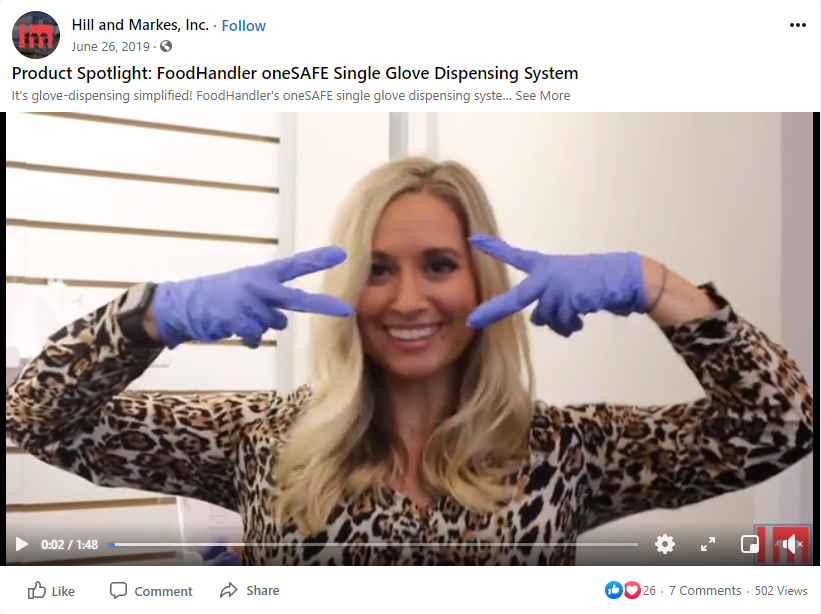
Hill & Markes does a great job of making their videos educational and entertaining at the same time
For more video ideas, read our blog, For Greater Reach and Engagement, Go Viral with Video, where we share additional ways Unilog customers are gaining ground with video.
Webinars and online training
Share your expertise by hosting webinars and virtual training for customers and targeted buyers in your industry. Unlike the video content we discussed above that can infuse a little entertainment and self-promotion, these educational modules are meant to teach viewers certifiable skills and applications related to their work. They should be objective pieces that showcase your knowledge about your products and their applications.
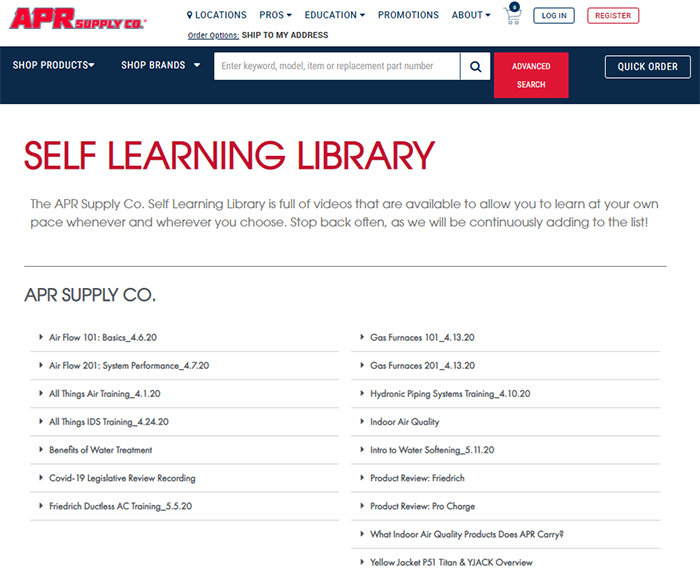
APR Supply Co. has a Self-Learning Library on their website with more than 50 training and troubleshooting videos allowing site visitors to “learn at their own pace”
While most of your video content should be made accessible to anyone, require pre-registration for live webinars and online classes. Online registration generates leads and allows you to send out event reminders and other follow-up communications related to their interests.
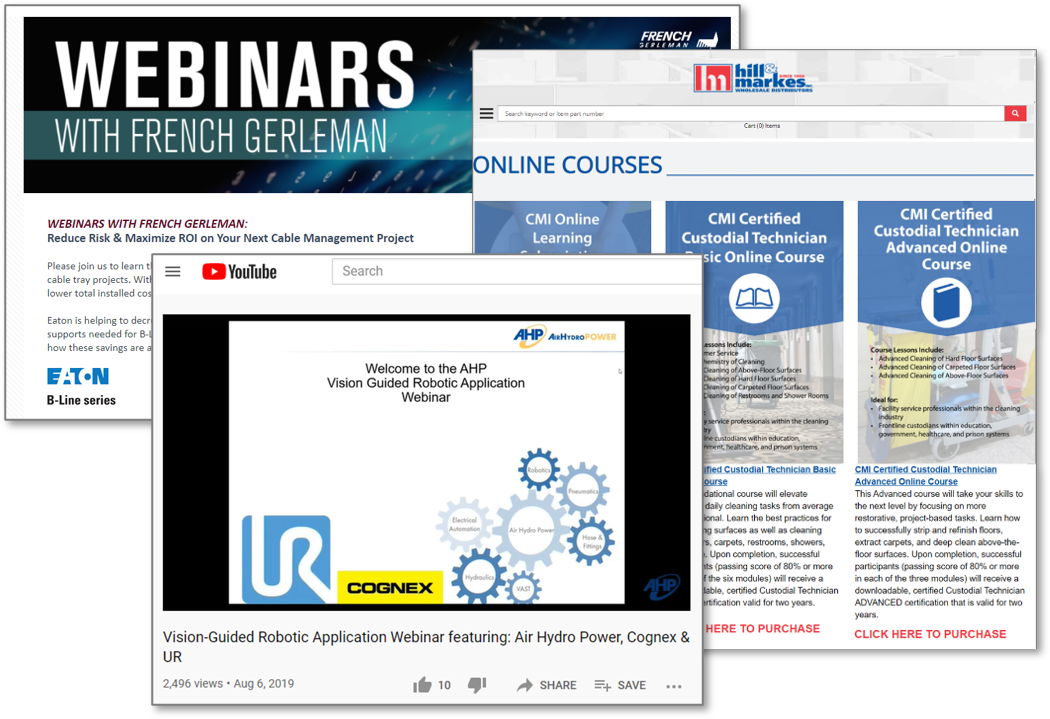
Online courses, webinars, and product training are all value-added content that benefits site visitors and
builds customer loyalty
Buyers expect informative and reliable content to help them in their job, which means the stakes are higher for distributors if they don’t put more effort toward developing valuable marketing content. As you create a content strategy, incorporate guidelines, goals, and governance to ensure integrity and relevance. Also, take advantage of analytics tools to monitor your content’s performance and engagement. Start slow and be strategic with your content development; it’s the best way to build an audience and brand awareness.